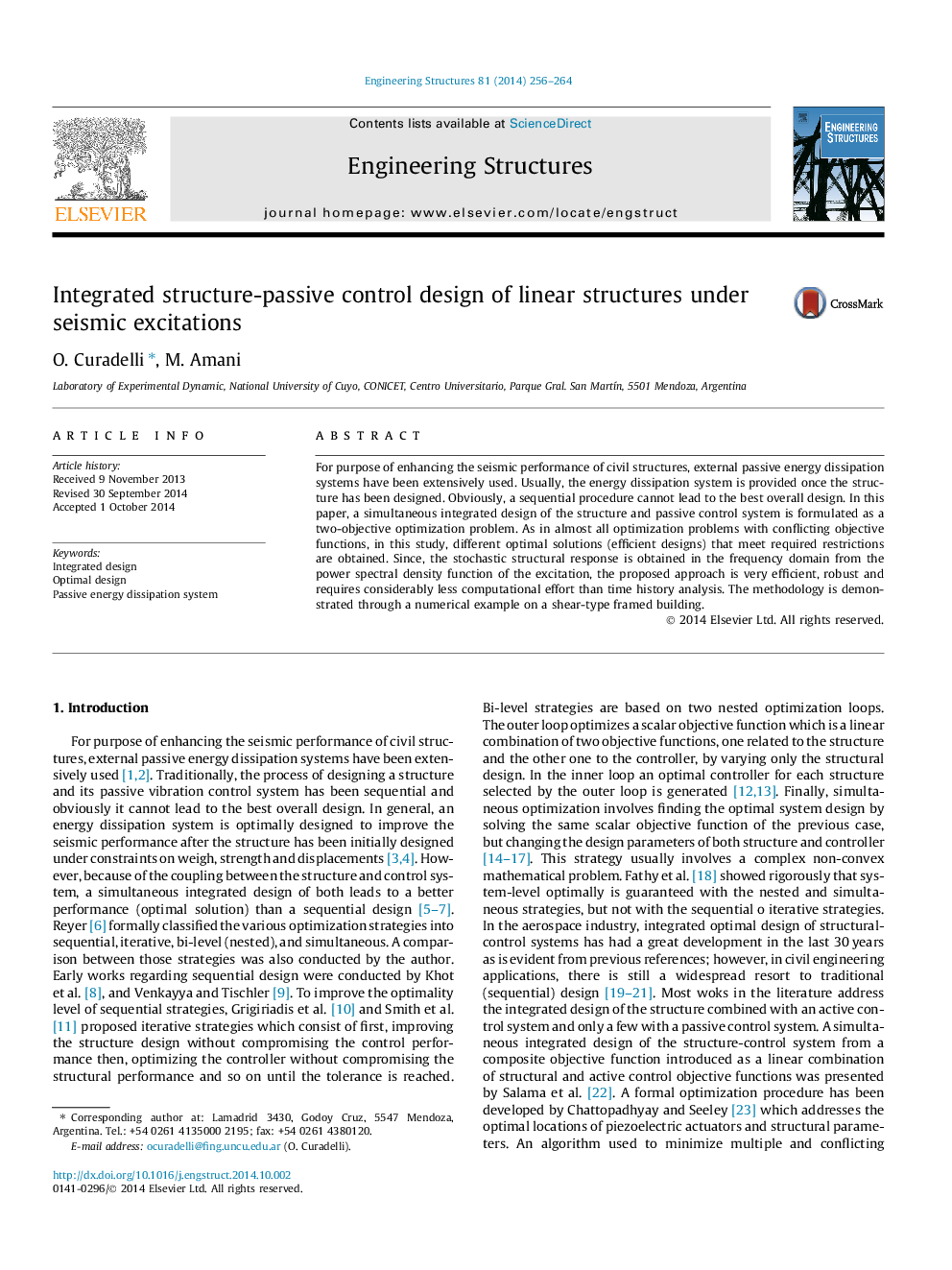| کد مقاله | کد نشریه | سال انتشار | مقاله انگلیسی | نسخه تمام متن |
|---|---|---|---|---|
| 6740747 | 504364 | 2014 | 9 صفحه PDF | دانلود رایگان |
عنوان انگلیسی مقاله ISI
Integrated structure-passive control design of linear structures under seismic excitations
ترجمه فارسی عنوان
طراحی یکپارچه کنترل ساختار منفعل ساختارهای خطی تحت تحریک لرزه ای
دانلود مقاله + سفارش ترجمه
دانلود مقاله ISI انگلیسی
رایگان برای ایرانیان
کلمات کلیدی
طراحی مجتمع، طراحی مطلوب، سیستم تخلیه انرژی منفعل،
ترجمه چکیده
به منظور ارتقای عملکرد لرزه ای سازه های مدنی، سیستم های بیرون کشیدن انرژی بیرونی، به طور گسترده ای مورد استفاده قرار گرفته اند. معمولا سیستم تخلیه انرژی هنگامی که ساختار طراحی شده است، ارائه می شود. بدیهی است، یک روش ترتیبی نمی تواند منجر به بهترین طراحی کلی شود. در این مقاله یک طراحی یکپارچه ساختار ساختاری و سیستم کنترل منفعل به عنوان یک مسئله بهینه سازی دو هدف صورت پذیرفته است. همانطور که در تقریبا تمام مشکلات بهینه سازی با توابع هدف متضاد، در این مطالعه، راه حل های بهینه ای متفاوت (طرح های کارآمد) که با محدودیت های مورد نیاز برآورده می شوند، به دست می آید. از آنجا که پاسخ ساختاری تصادفی در دامنه فرکانس از عملکرد چگالی طیفی قدرت تحریک حاصل می شود، رویکرد پیشنهادی بسیار کارآمد، قوی و مستلزم صرفه جویی در محاسبات کمتری نسبت به زمان تحلیل تاریخ است. این روش از طریق یک مثال عددی بر روی یک ساختمان قاب برش نشان داده شده است.
موضوعات مرتبط
مهندسی و علوم پایه
علوم زمین و سیارات
مهندسی ژئوتکنیک و زمین شناسی مهندسی
چکیده انگلیسی
For purpose of enhancing the seismic performance of civil structures, external passive energy dissipation systems have been extensively used. Usually, the energy dissipation system is provided once the structure has been designed. Obviously, a sequential procedure cannot lead to the best overall design. In this paper, a simultaneous integrated design of the structure and passive control system is formulated as a two-objective optimization problem. As in almost all optimization problems with conflicting objective functions, in this study, different optimal solutions (efficient designs) that meet required restrictions are obtained. Since, the stochastic structural response is obtained in the frequency domain from the power spectral density function of the excitation, the proposed approach is very efficient, robust and requires considerably less computational effort than time history analysis. The methodology is demonstrated through a numerical example on a shear-type framed building.
ناشر
Database: Elsevier - ScienceDirect (ساینس دایرکت)
Journal: Engineering Structures - Volume 81, 15 December 2014, Pages 256-264
Journal: Engineering Structures - Volume 81, 15 December 2014, Pages 256-264
نویسندگان
O. Curadelli, M. Amani,
